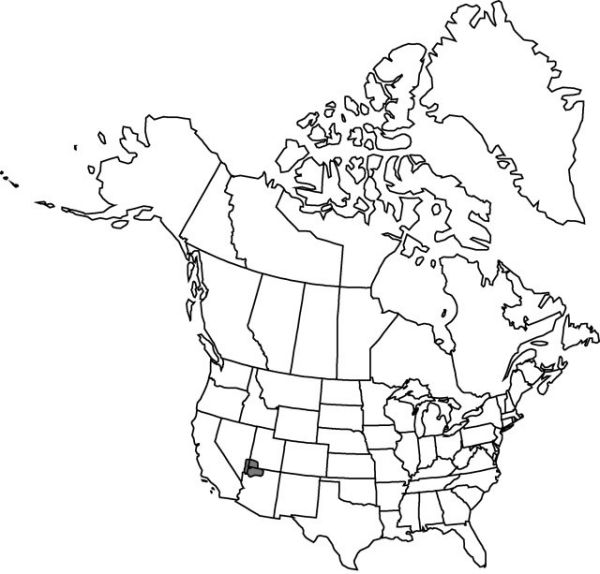Yucca utahensis
Yuccas Southw. U.S. 2: 94, plates 32–34. 1947.
Plants forming large colonies, caulescent or appearing acaulescent, not distinctly arborescent, 1.2–2.8 m; rosettes usually large. Stems often procumbent, usually 7 or more per colony, thick, 0.6–1.3 m. Leaf blade yellow-green, linear-lanceolate, plano-convex or plano-keeled, widest near middle, 20–70 × 0.7–2.2 cm, flexible, margins entire, curled, filiferous, whitish, apex tapering to short spine. Inflorescences paniculate, sometimes distally racemose, arising beyond rosettes, narrowly ellipsoid, 10–15 dm; branches 1–2 dm; bracts erect; peduncle scapelike, 1–1.6 m, 2.5–4.5 cm diam. Flowers pendent; perianth campanulate; tepals distinct, creamy white, broad-elliptic or ovate, 4–5 × 2–2.5 cm; filaments 2–2.5 cm; anthers 2–3 mm; pistil 2.5–3.5 cm; style white, 5–10 mm; stigmas lobed. Fruits erect, capsular, dehiscent, oblong-cylindric, 5–6 × 2–2.5 cm, dehiscence septicidal. Seeds dull black, thin.
Phenology: Flowering spring.
Habitat: Desert and desert hillsides and canyons, often sandy places
Elevation: 700–2000 m
Distribution

Ariz., Nev., Utah.
Discussion
S. D. McKelvey (1938–1947) suggested that Yucca utahensis is most closely related to Y. elata, from which it differs primarily in growth habit, capsule size, and leaf width, although with overlaps. S. L. Welsh et al. (1993) considered it equally or more closely related to Y. angustissima var. kanabensis, but DNA evidence (K. H. Clary 1997) suggests a closer relationship with Y. elata. J. M. Webber (1953) believed that Y. utahensis is a hybrid between Y. elata and Y. angustissima. The plants that are caulescent or subcaulescent were recognized by J. L. Reveal (1977c) as Y. elata var. utahensis; those that are acaulescent, or infrequently caulescent and with racemose inflorescences, he included in Y. angustissima.
Selected References
None.